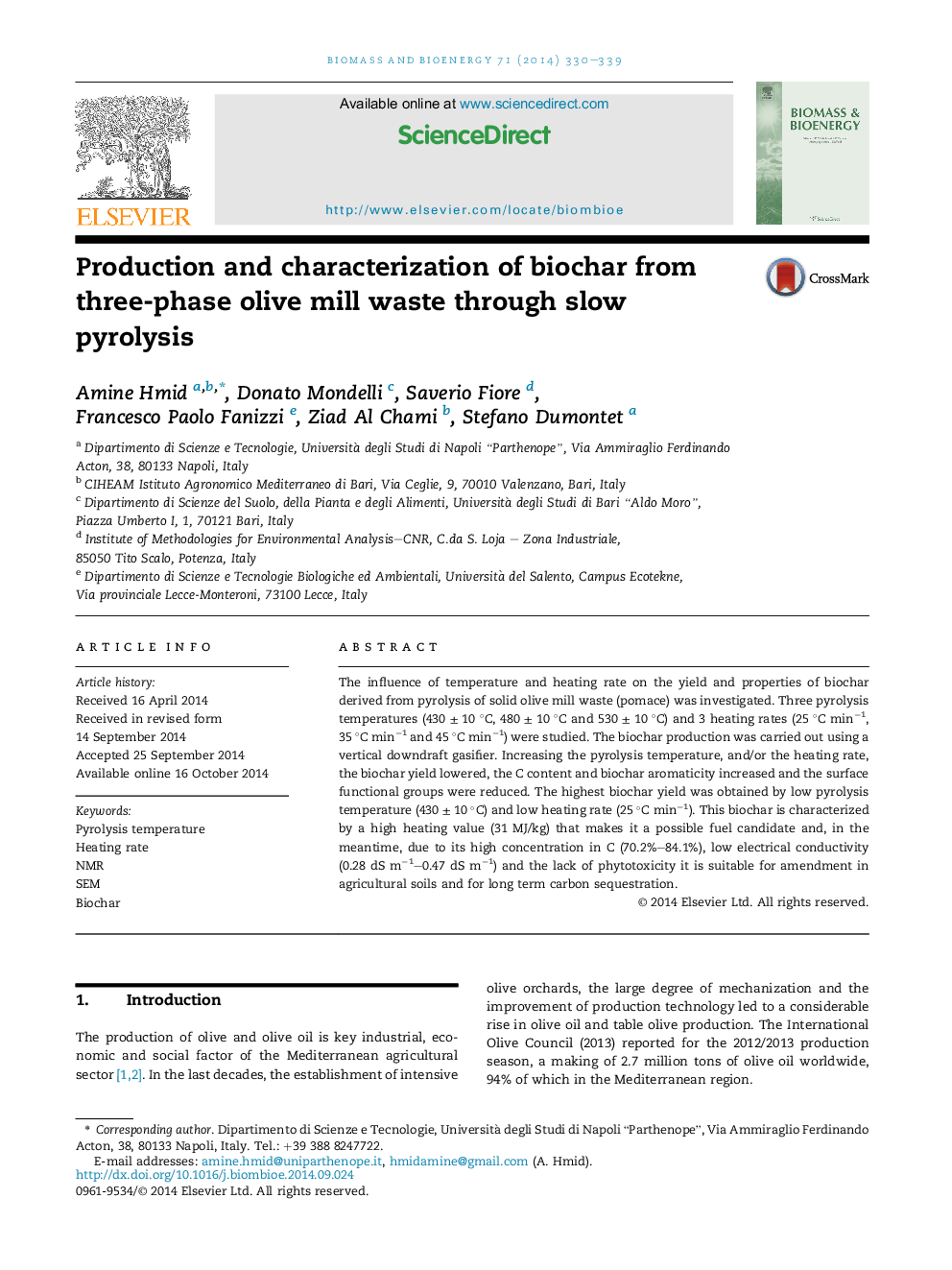| کد مقاله | کد نشریه | سال انتشار | مقاله انگلیسی | نسخه تمام متن |
|---|---|---|---|---|
| 676831 | 1459822 | 2014 | 10 صفحه PDF | دانلود رایگان |
• Olive mill waste can be transformed into a useful product (biochar) using pyrolysis.
• Biochar yield and properties were influenced both by temperature and heating rate.
• Biochar high heating value makes it a possible fuel candidate.
• Biochar can be used as soil amendment due to its pH, EC and germination test results.
• Biochar C content and CO2 emission factor make it suitable for carbon sequestration.
The influence of temperature and heating rate on the yield and properties of biochar derived from pyrolysis of solid olive mill waste (pomace) was investigated. Three pyrolysis temperatures (430 ± 10 °C, 480 ± 10 °C and 530 ± 10 °C) and 3 heating rates (25 °C min−1, 35 °C min−1 and 45 °C min−1) were studied. The biochar production was carried out using a vertical downdraft gasifier. Increasing the pyrolysis temperature, and/or the heating rate, the biochar yield lowered, the C content and biochar aromaticity increased and the surface functional groups were reduced. The highest biochar yield was obtained by low pyrolysis temperature (430 ± 10 °C) and low heating rate (25 °C min−1). This biochar is characterized by a high heating value (31 MJ/kg) that makes it a possible fuel candidate and, in the meantime, due to its high concentration in C (70.2%–84.1%), low electrical conductivity (0.28 dS m−1–0.47 dS m−1) and the lack of phytotoxicity it is suitable for amendment in agricultural soils and for long term carbon sequestration.
Journal: Biomass and Bioenergy - Volume 71, December 2014, Pages 330–339
